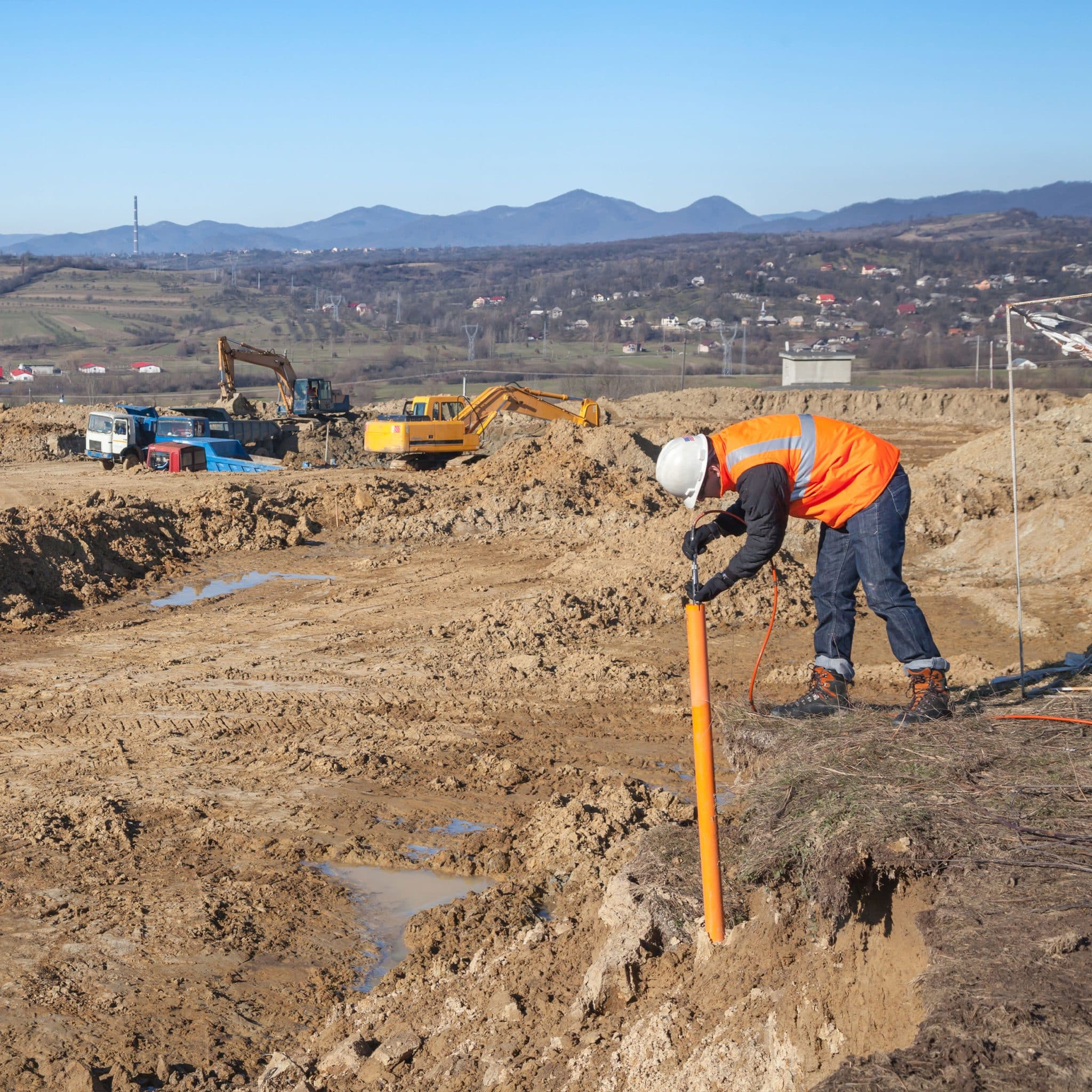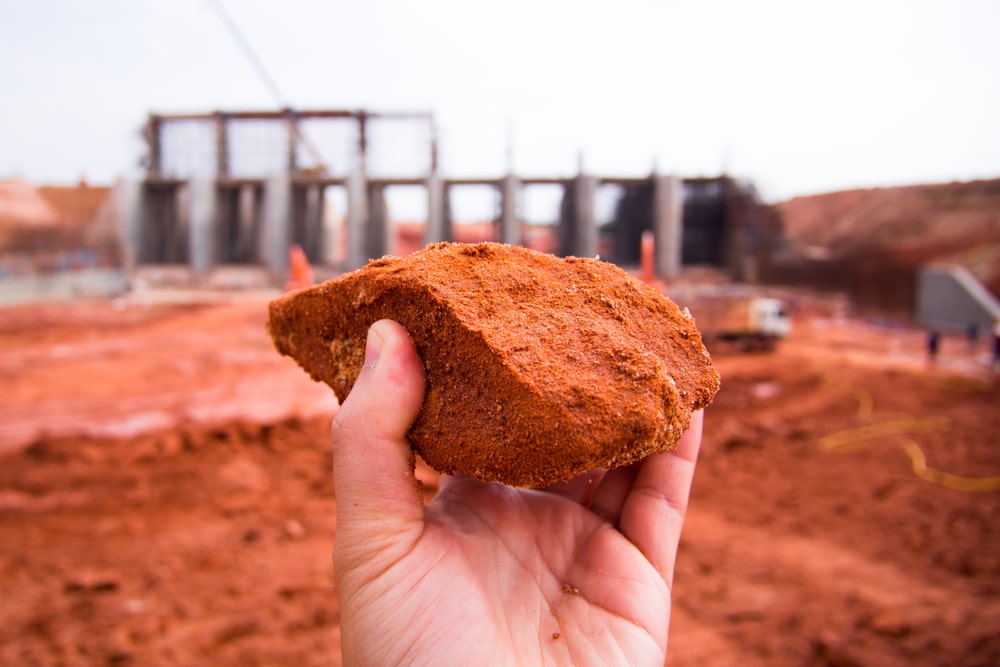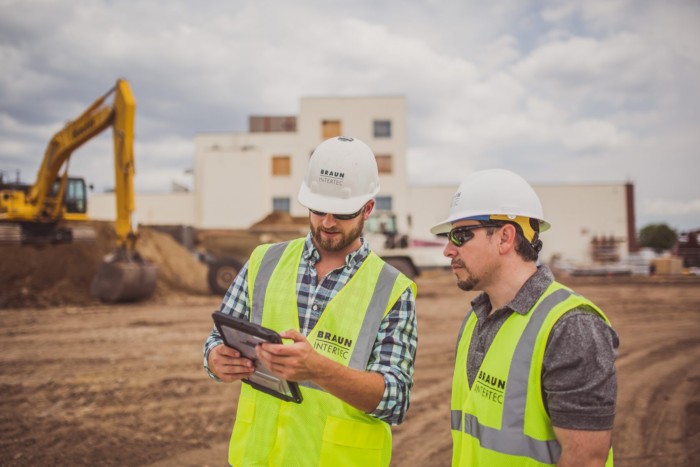Tailings Engineer: Important Knowledge for Sustainable Waste Management in Mining
Tailings Engineer: Important Knowledge for Sustainable Waste Management in Mining
Blog Article
Understanding the Crucial Duty of the Geotechnical Market in Modern Construction Projects and Framework Development
The geotechnical sector is a keystone of contemporary construction and facilities development, giving essential insights right into soil habits that straight influence task end results. Through sophisticated soil evaluations and cutting-edge design remedies, geotechnical experts not just ensure architectural honesty but likewise address sustainability concerns amidst developing ecological standards. As facilities demands grow and brand-new obstacles emerge, the value of this field comes to be increasingly evident. What ramifications might these developments have for future jobs and the total safety and security of our developed setting?
Significance of Dirt Analysis
Dirt analysis plays an important duty in the geotechnical sector, functioning as the structure for informed decision-making in building and construction tasks. Exact dirt evaluation is essential for figuring out the viability of a website for various kinds of structures, including residential homes, business buildings, and bridges. By examining soil structure, toughness, thickness, and dampness material, engineers can anticipate prospective challenges and minimize dangers connected with ground instability, disintegration, and settlement.
The assessment procedure commonly involves a series of examinations and observations that provide essential details regarding the subsurface conditions. This information notifies the layout and building procedures, making sure that structures are improved strong ground with sufficient assistance. Moreover, recognizing the dirt profile allows engineers to select suitable building methods and materials, maximizing source usage and decreasing expenses.
In enhancement to ensuring structural honesty, soil evaluation adds to ecological sustainability. By identifying possible contamination or unfavorable results on bordering environments, designers can implement methods to shield these natural deposits. Overall, complete dirt assessment is essential in the geotechnical field, underpinning the safety and security, performance, and environmental responsibility of building jobs.
Key Geotechnical Methods
A range of crucial geotechnical strategies are employed to enhance the stability and evaluate and performance of building sites. One fundamental method is dirt tasting and screening, which permits engineers to identify the physical and chemical residential or commercial properties of the ground. This information is essential for making informed decisions regarding foundation layout and building techniques.
Another vital strategy is site characterization, which entails the thorough analysis of soil and rock conditions through approaches such as borehole exploration and in-situ screening. Methods like Standard Penetration Examinations (SPT) and Cone Infiltration Tests (CPT) offer important data on dirt stamina and stratigraphy.
Ground enhancement techniques, such as dirt stablizing and grouting, are also crucial in improving the load-bearing capability of weak dirts. These methods can alleviate settlement and improve overall website conditions.
In addition, incline stability evaluation is critical for determining possible landslide dangers and ensuring the safety of excavations. This analysis commonly uses mathematical modeling and limit equilibrium approaches to forecast soil actions under different problems.
Integrating these geotechnical strategies right into building preparation not only optimizes project end results but additionally guarantees the lasting sustainability of framework advancement.
Impact on Building Security

Moreover, reliable geotechnical engineering includes executing mitigation strategies for determined threats. This may consist of dirt stabilization methods, preserving structures, or water drainage systems to relieve hydrostatic pressure. By attending to these variables, building groups can lower the possibility of crashes and enhance worker safety and security.
In addition, continuous tracking of website problems is vital during building. Geotechnical tools can provide real-time data relating to ground movement and stability, permitting prompt treatments when necessary.
Basically, the geotechnical industry plays a critical function in securing building and construction tasks. By prioritizing ground stability and utilizing extensive analysis approaches, the geotechnical market not just shields the labor force but additionally adds to the longevity and reliability of created facilities.
Sustainability in Geotechnical Practices

Furthermore, geotechnical designers are now utilizing sophisticated innovations, such as geosynthetics, which improve soil security while reducing the volume of material called for. This not just preserves resources but also leads to less waste generation (geo tech engineer). The assimilation of sustainable design concepts right into geotechnical design motivates making use of renewable resource resources in building processes, further minimizing carbon discharges
Furthermore, extensive site assessments are essential for recognizing prospective environmental impacts prior to building begins. By carrying out these evaluations, geotechnical professionals can create methods that reduce damaging effects, making certain conformity with environmental laws. Generally, the emphasis on sustainability within geotechnical methods not only adds to the durability and strength of facilities but also advertises a responsible strategy to land and resource monitoring. This commitment is important for fostering lasting development in the contemporary construction landscape.
Future Trends in Geotechnical Engineering
Innovation is driving the future of geotechnical engineering, as arising modern technologies and methods reshape the industry. The combination of sophisticated information analytics and expert system is set to reinvent site investigation and danger click assessment, allowing designers to make even more enlightened choices based upon real-time information. In addition, making use of geosynthetic materials is acquiring traction, providing sustainable solutions that improve soil stability and decrease environmental effect.
One more significant pattern is the fostering of automated and robotic systems for monitoring and building and construction procedures. These innovations not just improve precision however likewise enhance safety and security by lessening human involvement in dangerous environments. In addition, the application of Building Details Modeling (BIM) in geotechnical layout promotes enhanced collaboration amongst stakeholders, enhancing project distribution and decreasing expenses.
As climate modification positions brand-new difficulties, the market is significantly focusing on resilience and flexibility in design techniques, guaranteeing infrastructure can withstand severe weather condition occasions. Lastly, the ongoing pattern toward sustainability will certainly drive innovation in green products and approaches, aligning geotechnical find more design with broader ecological objectives. Collectively, these trends will form an extra efficient, lasting, and resistant geotechnical landscape for future tasks.
Verdict

The geotechnical industry is a cornerstone of modern building and construction and framework advancement, offering vital insights into dirt habits that directly influence project end results. tailings engineer.Soil analysis plays an essential function in the geotechnical sector, offering as the structure for notified decision-making in construction tasks. On the whole, complete soil evaluation is crucial in the geotechnical area, underpinning the safety, performance, and ecological duty of building projects
Building security is considerably affected by geotechnical methods, as the security and stability of the ground directly impact the total safety and security of a building website.In final thought, the geotechnical sector is vital in modern building and facilities advancement, providing important assessments that make certain structural stability and safety and security.
Report this page